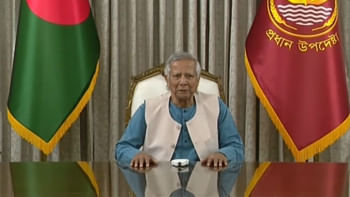DANCING IN THE DARK: MY STRUGGLE BOOK 4

This is the fourth installment of the six-volume autobiography of Norwegian novelist Karl Ove Knausgaard and has been translated from the Norwegian by Don Bartlett (Readers interested in the writer should know that I had reviewed the first three volumes earlier in the review page of The Daily Star). True to its title, the 485 page memoir gets into details of the author's early life, particularly his boyhood and teenage years, and describes in great detail the challenges he faced while growing up in a small town in northern Norway where he eventually finds a job as a school teacher at Hafjord School. He was then an 18 year old breaking away from the comforts of family life, and had begun working with 4-7 graders. Like all his other volumes, it is an engaging story, almost a plotless novel.
Knausgaard is a best-selling author who shot into fame with succeeding volumes of his till now 3,500 page autobiography My Struggle. "This Proustian masterpiece has opened a window into one of the most original minds writing today." Rachel Cusk of The Guardian has also called it, "The most significant literary enterprise of our time." The series has also been called a "solipsistic" epic.
Knausgaard started out as a writer of fiction but soon found his calling as a powerful narrator of life events. Indeed, he has on occasions indicated that he views fiction with suspicion. He loves that the truth can only be experienced from one's own experience. However, the description of his personal experiences from early life has the appeal of classic fiction. Knausgaard addresses one theme after another meticulously—his infatuation with girls and his addictions, his attempts to befriend and sleep with women, the way he wrote and partied after work, and his relationships with his divorced parents and brother, Yngve.
The most interesting aspect of this volumes involves Knausgaard 's journey as a writer. Like many great writers of the world, including Gabriel Garcia Marquez and Syed Mujtaba Ali, he knew from his teenage years that he wanted to be a writer. His first writing job came as a reviewer of music records for a local newspaper, Nye Sorlandet. Soon he started writing short stories and formed plans to start a novel.
The journey of a good writer begins with small steps, and we can notice the same trajectory in Knausgaard's life. He has discussed his path to becoming a writer with a world-wide following in all the volumes he has published till now. In Dancing in the Dark one can see how he connects the dots, took his first steps as a writer, and enrolled in a creative writing program at the prestigious Skrive Kunstak Akademi at Bergen, Norway.
Some of the best things about reading Knausgaard's writing are his smooth narrative style, the emotions he displays in his self-reflections, the candor, sometimes bordering on recklessness, that he displays, and the perspective he offers on growing up as a teenager coping with challenges that we all face in our own lives. To quote one recent review, "critics often remark on the guilelessness of the prose. Like clear running water, it can seem mysteriously impelled, magically transparent."
Knaugaard opens himself up to us fully and we get to know the person he is, his habits, lust, and passions. As is his practice, he describes in very poetic terms his weaknesses, particularly his initial inability to get an ejaculation. However, the book ends with an encounter where finally he achieves success in that area!
This book can be enjoyed for its style, the author's knack for describing nature's beauty, winter storms, and the coping mechanism of a teenager faced with loneliness, the early challenges Knausgaard faced as a writer, failures in his personal relationships, and the taunts he endured from fellow workers. He also discusses the books he reads and the writers who influenced him, who include Hemingway, Tolkien, and Mann.
There are many treats waiting for readers of this volume. One is Knausgaard's nuanced narrative of his relationship with one of his teenage students, Andrea. He found himself at the center of her world, her admiration, and even what he suspected was love. But she was his student and only thirteen years old. His sentiments then and his efforts to stay away from any deep involvement with her result in good reading material, both from the literary as well as the developmental perspectives. And then there are his affairs and breakup. Towards the end he devotes 16 pages to describe how he met and swooned over a girl named Ine and how the relationship ended.
James Wood in The New Yorker has enthused about the "…superb, lingering, celestial passages" of Dancing in the Dark. Here is one passage that I especially savored and would like to share with the reader in ending my review. It describes how once after using the toilet, he had washed his hand and looked at the mirror. And this is what he felt then: "..The singular feeling that arose when you looked at your own eyes, which so purely and unambiguously expressed your inner state of being both inside and outside, filled me to the hilt for a few intense seconds, but was forgotten the moment I left the room… in the same way that a towel on a hook or a bar of soap in the small hollow in the sink also were, all these trivialities that have no existence beyond the moment, but hang or lie undisturbed in dark empty rooms until the door is opened the next time and another person grasps the soap, dries their hands on the towel and examines their soul in the mirror." (p. 371)
Abdullah Shibli lives and works in Boston and has recently published a collection of short stories, entitled Nightfall.


 For all latest news, follow The Daily Star's Google News channel.
For all latest news, follow The Daily Star's Google News channel. 



Comments